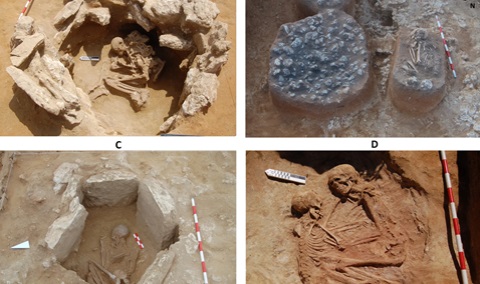Neolithic groups from the south of the Iberian Peninsula first settled in San Fernando (Cadiz) 6,200 years ago
New study by ICTA-UAB and the University of Cádiz reveals that the first farmers and herdsmen settled in Andalusia collected and consumed shellfish throughout the year, especially in winter.

The first Neolithic farmers and shepherds in Andalusia settled permanently on the island of San Fernando, Cadiz, 6,200 years ago, where they continued to collect and consume shellfish throughout the year, preferably in winter. This is the conclusion of an archaeological study led by Asier García-Escárzaga, researcher at the Institute of Environmental Science and Technology (ICTA-UAB) and the Department of Prehistory of the Universitat Autònoma de Barcelona (UAB), which shows that these populations occupied the island throughout the year.
The research carried out in recent decades in the south of the Iberian Peninsula has revealed many aspects of the life of the first Neolithic groups in Andalusia. These populations were the first to base their subsistence mainly on agriculture and livestock, rather than hunting and gathering. However, there were still questions to be answered about the patterns of occupation of sites (annual or seasonal) and the exploitation of marine resources after the adoption of a new economic model.
In a new study, published in the prestigious international journal Archaeological and Anthropological Science, oxygen stable isotope analysis was applied to marine shells to address both questions. The shells analysed were recovered from the sites of Campo de Hockey (San Fernando, Cadiz).
The necropolis of Campo de Hockey, excavated in 2008, is located on the ancient island of San Fernando, just 150 metres from the ancient coastline. The excavations, directed by Eduardo Vijande from the University of Cadiz, allowed to document 53 graves (45 single, 7 double and 1 quadruple). Most of them were plain (simple graves in which the individual is buried), but what stood out the most was the existence of 4 graves of greater complexity and monumentality, made with medium and large stones considered to be proto-megalithic. The Campo de Hockey II site, annexed to the first site and whose excavation and research was conducted by María Sánchez and Eduardo Vijande in 2018, allowed for the identification of 28 archaeological structures (17 hearths, two shell heaps, four tombs and five stone structures).
The high presence of hearths and mollusk and fish remains in the middens suggests that the area was used for the processing and consumption of marine resources. Among the information that can be obtained from the analysis of stable oxygen isotopes in marine shells is the possibility of reconstructing the time of year when the mollusks died, and therefore when they were consumed by prehistoric populations in the past.
The results of this research indicate that the first farmers occupying the island of San Fernando collected shellfish all year round, but more in the colder months of autumn, winter, and early spring, that is, from November to April. This information allowed the scientific team to conclude that these populations occupied the island throughout the year. "The size of the necropolis already led us to believe that it was an annual habitat, but these studies confirm the existence of a permanent settlement 6,200 years ago," said Eduardo Vijande, researcher at the University of Cadiz and co-author of the study.
The greatest exploitation of shellfish during the coldest months of the year coincides with the annual period of maximum profitability of this food resource due to the formation of gametes. A seasonal pattern of shellfish consumption based on energetic cost-benefit principles which is similar to that developed by the last hunter-gatherer populations of the Iberian Peninsula. "That is to say, there is a greater exploitation of these topshells in the winter months, since this is the time when these animals present a greater quantity of meat," points out Asier García-Escárzaga. This suggests that, although these new Neolithic groups had changed their economic model, living from agriculture and livestock, in this settlement located in an insular environment, the exploitation of the marine environment continued to be of great importance.
The study forms part of four research projects coordinated from the Universitat Autònoma de Barcelona (PID 2020-115715 GB-I00) and the University of Cadiz (FEDER-UCA18-106917 and CEIJ-015 [2018-2019]) in Spain, and the Max Planck Institute in Germany.
Reference
García-Escárzaga, A.; Cantillo, J.J.; Milano, S.; Arniz-Mateos, R.; Gutiérrez-Zugasti, I.; González-Ortegón, E.; Corona, J.M.; Colonese, A.C.; Ramos-Muñoz, J.; Vijande-Vila, E. 2024. Marine resource exploitation and human settlement patterns during the Neolithic in SW Europe: Stable oxygen isotope analyses (δ18O) on Phorcus lineatus (da Costa, 1778) from Campo de Hockey (Cádiz, Spain), Archaeological and Anthropological Science. DOI: http://doi.org/10.1007/s12520-024-01939-0